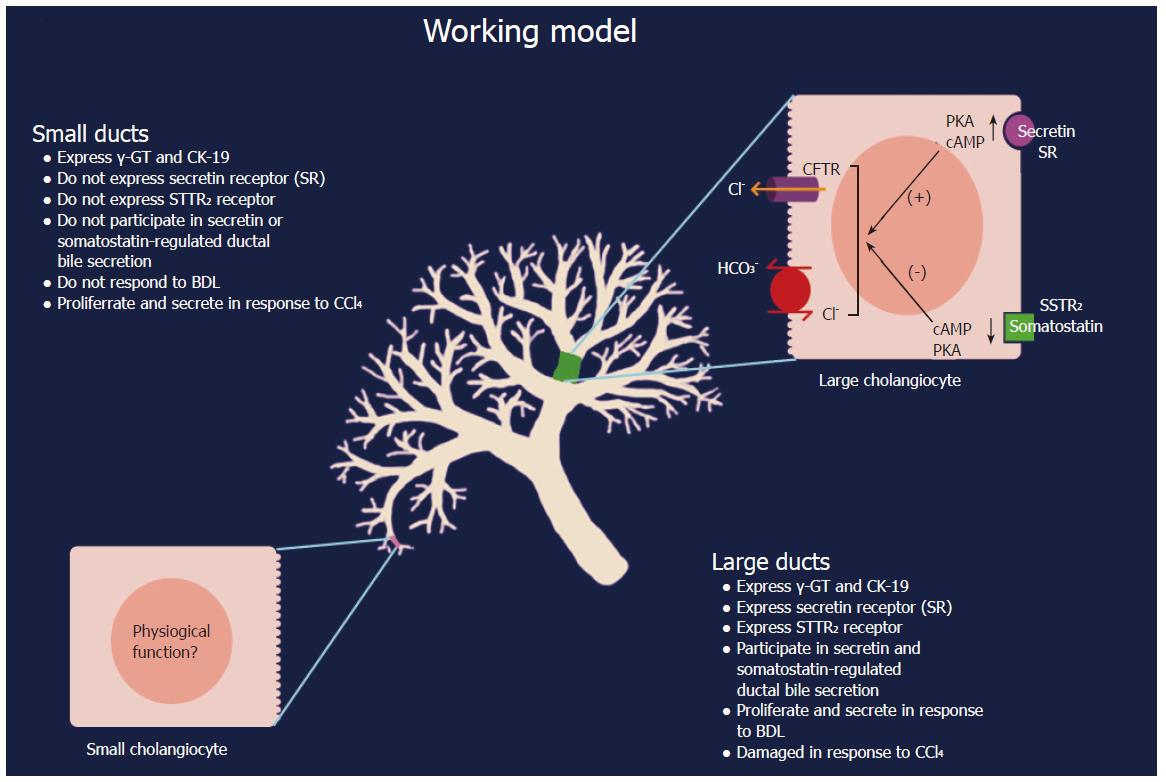Copyright
©2006 Baishideng Publishing Group Co.
World J Gastroenterol. Jun 14, 2006; 12(22): 3523-3536
Published online Jun 14, 2006. doi: 10.3748/wjg.v12.i22.3523
Published online Jun 14, 2006. doi: 10.3748/wjg.v12.i22.3523
Figure 3 Working model for the heterogeneity of the intrahepatic biliary epithelium.
The model proposes that: (1) bile ducts are morphologically heterogeneous with small ducts lined by small cholangiocytes and large ducts lined by large cholangiocytes; (2) small and large ducts similarly express both γ-GT and cytokeratin-19; and (3) large (but not small) ducts express the secretin and somatostatin receptor, CFTR and Cl-/HCO3- and respond physiologically to these two hormones. The model also shows that following BDL, only large cholangiocytes proliferate and that a single dose of CCl4 induces damage and loss of large duct function, whereas small cholangiocytes (resistant to CCl4) de novo proliferate and secrete to compensate for the loss of large duct function. Reproduced with permission from Ref. 73.
- Citation: Glaser S, Francis H, DeMorrow S, LeSage G, Fava G, Marzioni M, Venter J, Alpini G. Heterogeneity of the intrahepatic biliary epithelium. World J Gastroenterol 2006; 12(22): 3523-3536
- URL: https://www.wjgnet.com/1007-9327/full/v12/i22/3523.htm
- DOI: https://dx.doi.org/10.3748/wjg.v12.i22.3523









